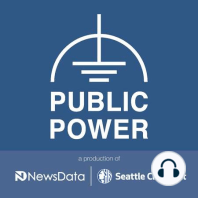51 min listen
Resource Adequacy double-feature!
ratings:
Length:
52 minutes
Released:
Apr 21, 2021
Format:
Podcast episode
Description
It’s Resource Adequacy double-feature! week on Public Power Underground! We talk about the Northwest Power Pool’s Resource Adequacy program in back-to-back interviews. First with NWPP’s Chief Operating Officer, Gregg Carrington, and the second interview with Chair of WSPP’s Operating Committee, Matthew Schroettnig. And to get caught up on the BP-22/TC-22 rate cases we talk to PPC’s Mike Deen about what’s going on!
01:31 - Arin Reports
05:11 - Celebration of ClearingUp’s 2000th edition
07:22 - PPC’s Mike Deen joins to talk BP-22/TC-22 rate process
15:06 - PG&E’s Community Microgrid Enablement Program
18:01 - “Agro-voltaic” solar projects
21:11 - PUBLIC SERVICE ANNOUNCEMENT; Ted Lasso, Season 2 is coming
22:17 - NWPP’s Gregg Carrington gives advice on approach to the RA program for those that aren’t power pool members
34:42 - Chair of WSPP’s Operating Committee, Matt Schroettnig, talks about how a RA product might go through the process to develop a standard product exhibit/rider
43:30 - Anadromous Championship Belt return counts w/ Karen Heim and Lauren Tenney Denison
Public Power Underground, it’s work to watch. Public Power Underground, for electric utility enthusiasts.
to sign up for the newsletter visit our substack at publicpowerunderground.substack.com.
01:31 - Arin Reports
05:11 - Celebration of ClearingUp’s 2000th edition
07:22 - PPC’s Mike Deen joins to talk BP-22/TC-22 rate process
15:06 - PG&E’s Community Microgrid Enablement Program
18:01 - “Agro-voltaic” solar projects
21:11 - PUBLIC SERVICE ANNOUNCEMENT; Ted Lasso, Season 2 is coming
22:17 - NWPP’s Gregg Carrington gives advice on approach to the RA program for those that aren’t power pool members
34:42 - Chair of WSPP’s Operating Committee, Matt Schroettnig, talks about how a RA product might go through the process to develop a standard product exhibit/rider
43:30 - Anadromous Championship Belt return counts w/ Karen Heim and Lauren Tenney Denison
Public Power Underground, it’s work to watch. Public Power Underground, for electric utility enthusiasts.
to sign up for the newsletter visit our substack at publicpowerunderground.substack.com.
Released:
Apr 21, 2021
Format:
Podcast episode
Titles in the series (100)
Bonus Episode: The Scourge of Seasonal Time Change: In a special, bonus, episode the Underground tackles The Scourge of Seasonal Time Change. Joining the Underground to tackle the issue is the Executive Director of the Pacific Northwest Utilities Conference Committee (PNUCC), Shauna McReynolds, the Power R by Public Power Underground
